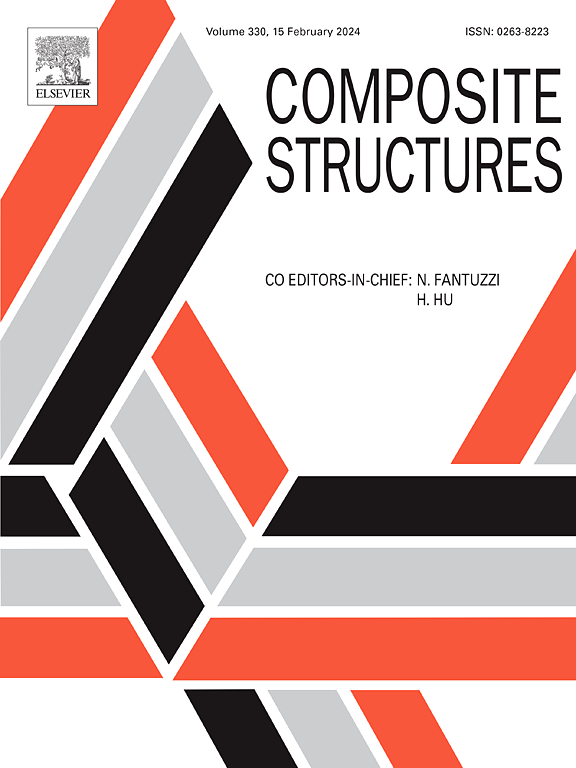基于非线性数据驱动的纤维束本构模型预测平纹编织cmc的面内剪切行为
IF 6.3
2区 材料科学
Q1 MATERIALS SCIENCE, COMPOSITES
引用次数: 0
摘要
本文通过多尺度方法研究了平面编织陶瓷基复合材料(CMCs)的面内剪切行为,将数据驱动的纤维束本构模型与剪切损伤相结合。采用x射线计算机断层扫描(CT)原位剪切试验研究了平纹编织cmc的剪切损伤机制。采用基于深度学习的图像分割方法准确识别内部材料损伤,实现定量分析和三维可视化。在细观尺度上,建立了基于ct的、数据驱动的纤维束在剪切作用下的非线性本构模型,以捕捉cmc的渐进损伤。在宏观尺度上,基于CT数据构建了精细化的单位细胞模型进行数值模拟。通过与数字体积相关(DVC)结果和测试数据的比较,验证了模型的准确性。该研究确定了在0°轴向中纤维的分裂和滑动,以及在90°轴向中桥接纤维的弯曲是主要的剪切损伤机制。高保真剪切力学模型,结合现场CT数据的裂纹密度,提供了对平纹编织cmc剪切行为的准确预测。本文章由计算机程序翻译,如有差异,请以英文原文为准。
A nonlinear data-driven constitutive model for fibre tows to predict in-plane shear behaviour of plain weave CMCs
This paper investigates the in-plane shear behaviour of plain weave ceramic matrix composites (CMCs) through a multi-scale approach, integrating a data-driven constitutive model for fibre tows with shear damage. X-ray Computed Tomography (CT) in-situ shear tests were performed to examine the shear damage mechanisms in plain weave CMCs. A deep-learning-based image segmentation method was employed to accurately identify internal material damage, enabling both quantitative analysis and Three-Dimensional (3D) visualisation. At the mesoscopic scale, a CT-based, data-driven nonlinear constitutive model for fibre tows under shear was developed to capture the progressive damage of CMCs. At the macroscopic scale, a refined unit cell model based on CT data was constructed for numerical simulation. The model’s accuracy was validated by comparing its predictions with Digital Volume Correlation (DVC) results and test data. The study identifies tow splitting and sliding in the 0° tows, as well as bending of bridging fibres in the 90° tows, as the primary shear damage mechanisms. A high-fidelity shear mechanical model, incorporating crack density from in-situ CT data, provides accurate predictions of the shear behaviour in plain weave CMCs.
求助全文
通过发布文献求助,成功后即可免费获取论文全文。
去求助
来源期刊

Composite Structures
工程技术-材料科学:复合
CiteScore
12.00
自引率
12.70%
发文量
1246
审稿时长
78 days
期刊介绍:
The past few decades have seen outstanding advances in the use of composite materials in structural applications. There can be little doubt that, within engineering circles, composites have revolutionised traditional design concepts and made possible an unparalleled range of new and exciting possibilities as viable materials for construction. Composite Structures, an International Journal, disseminates knowledge between users, manufacturers, designers and researchers involved in structures or structural components manufactured using composite materials.
The journal publishes papers which contribute to knowledge in the use of composite materials in engineering structures. Papers deal with design, research and development studies, experimental investigations, theoretical analysis and fabrication techniques relevant to the application of composites in load-bearing components for assemblies, ranging from individual components such as plates and shells to complete composite structures.
 求助内容:
求助内容: 应助结果提醒方式:
应助结果提醒方式:


